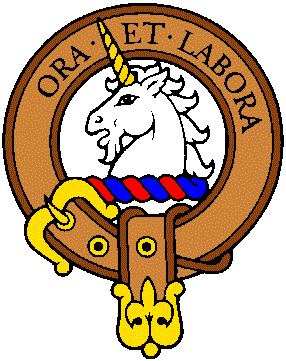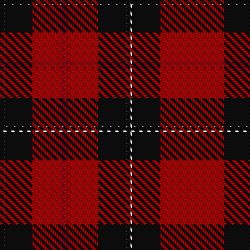
|

Ramsay Red Modern
|

Blue - Hunting
|

Ramsay of Dalhousie
|

of Angus & Mearns
|

Orange - Hunting
|

Green - Fashion
|
|
CREST: A unicorn's head, couped, argent, armed, or.
MOTTO: Ora et labora: Pray and work
SEPTS: Ramsay, Ramsey, Rumsey, Dalhousie, Maule, Brechin, and Brecheen
The Ramsays are an ancient family of Anglo-Norman origin. The name was first recorded in Scotland by Simon de Ramsay, who travelled north with the Earl of Huntingdon in 1124. He was granted lands in Lothian and was the ancestor of the Ramsays of Dalhousie.
The Ramsay family prospered and by the thirteenth century there were five major branches: Dalhousie, Auchterhouse, Banff, Forfar and Chatto.
The Ramsay family undertook to maintain a Bruce on the throne of Scotland.
Sir Alexander Ramsay of Dalhousie, a renowned knight of the fourteenth century, was honoured in song and story for raising the siege of Dunbar in 1338, and for leading daring guerrilla raids against the English. He was repaid by being created Constable of Roxburgh Castle but this act offended the neighbouring family of Douglas. The leader of the Douglas clan imprisoned Sir Alexander in Hermitage Castle where he starved to death.
In 1513 during the Anglo-Scottish Wars, Sir Alexander's descendant, another Alexander Ramsay, was killed at the Battle of Flodden. Dalhousie then passed to his son, Nicolas, who was a staunch supporter of Mary, Queen of Scots. After Mary was defeated the Ramsays acknowledged her son as James VI of Scotland and the Ramsays were later rewarded for saving that monarch's life.
Subsequent members of the Ramsay clan continued the military tradition but fighting was not the only talent of this great family. Later descendants include Alan Ramsay, the great eighteenth century poet. His son also achieved fame as a distinguished portrait painter.
The seat of the chiefs of the Ramsay clan is now Brechin Castle in Angus.
For a printable pdf with more information, click
HERE
